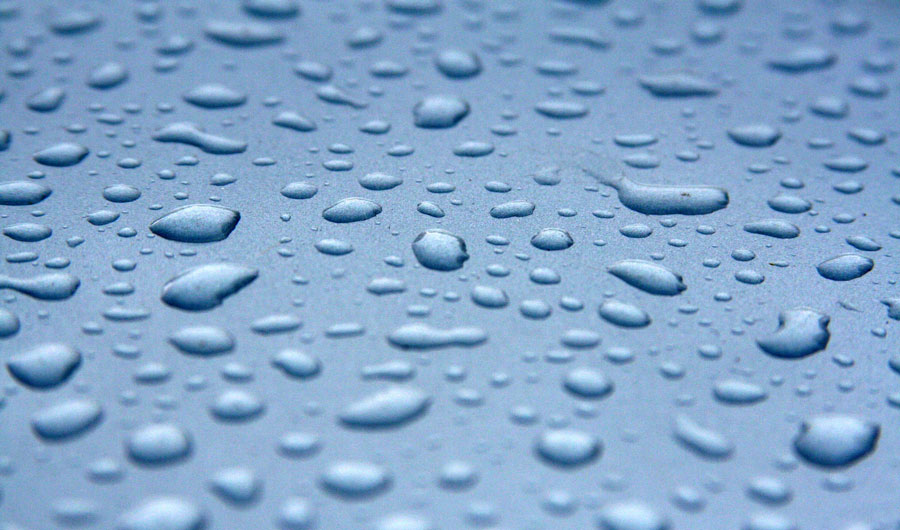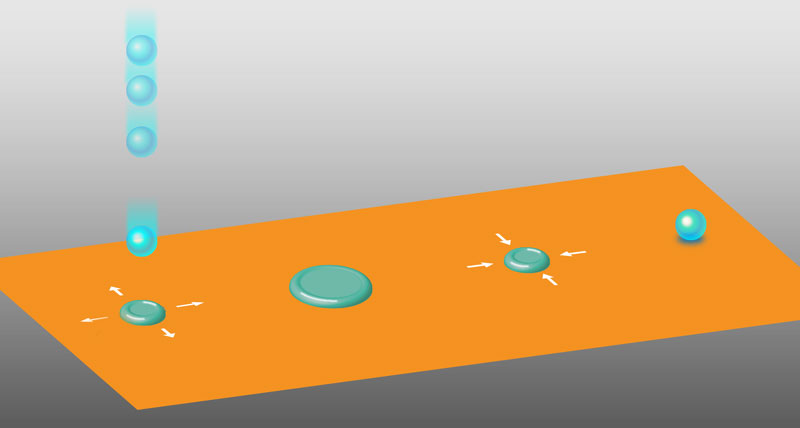How Much Power Can We Get from Raindrops?
(Inside Science) -- Solar panels are essentially useless in the rain. But what if raindrops themselves could fall on a solar panel and generate electricity? It's possible. However, there's not that much power there to harvest.
The best the hypothetical device could do is to transform all the energy due to the motion of a falling raindrop into electricity. That kinetic energy is usually computed by multiplying one-half the mass (m) of the moving object by its velocity (v), and then multiplied by the velocity once more, and is usually written as follows:
To figure out the amount of energy that can be harvested from falling raindrops, we will need to know how much rain is falling and how fast.
Although raindrops fall from miles above the ground, they don’t accelerate the whole way down. Instead, they reach a terminal velocity within a few seconds when the force of air resistance balances out the pull of gravity.
Because the terminal velocity is related to air resistance, the value is different for raindrops of different sizes. For example, a raindrop on the heavier side would have a terminal velocity of around 10 meters per second (m/s), while drizzles would have a much lower terminal velocity of 1 m/s.
For the sake of our exercise, let’s use the outlandish amount of rain that fell near Houston during Hurricane Harvey in 2017. The 50 inches of water that fell there over the course of four days represent about 0.5 inches of water per hour, a high-end estimate by all means.
After doing the needed conversions, the math shows that about 13 kilograms of water would fall every hour on a 1 meter by 1 meter panel sitting directly under the downpour (100 cm x 100 cm x 0.5 inches = 13,000 cubic centimeters of water = 13 kg).
If we assume all the raindrops were on the larger side with a terminal velocity of 10 m/s, the total kinetic energy, measured in joules, for all the raindrops hitting the 1 meter by 1 meter panel over an hour would be:
Averaging over an hour, or 3,600 seconds, the power output of the raindrops would be:
To generate enough power for an average U.S. household, at about 1,300 W, the hypothetical panel would take an area about the size of a football field -- and that's during a historic rainstorm. It's also assuming, unrealistically, that the panels are 100% efficient.
Is it good for anything?
While the tiny amount of energy from raindrops won’t power your house for very long, there are plenty of other potential applications that draw inspiration from similar concepts.
“Water droplet energy is indeed small, so that people did not realize such energy can be harvested previously. But with the rapid development of ‘Internet of Things,’ many smart devices raise demand for the distributed sensors and energy sources,” wrote Hao Wu in an email to Inside Science. She is an engineer from the Chinese University of Hong Kong and an author of a paper published this August in the journal Physical Review Letters that looked into new ways to harness the kinetic energy of droplets. “Some ‘environmental energy’ such as water droplet, wind, motions in our human body are expected to support this demand.”
Zuankai Wang, an engineer from City University of Hong Kong and an author of a separate paper on the same subject, published in the journal Nature, said that self-contained devices that don't need a lot of power, such as implantable medical devices, are ideal candidates to benefit from the ability to harvest power from otherwise untapped sources, which could eliminate the need for battery changes.
Scientists are looking into new ways to harvest the kinetic energy from droplets inside the body to further that goal.
Lightning strikes and lotus leaves
Humans have harnessed the power of water for centuries. From watermills to hydroelectric dams, many devices run on rainwater that is gathered from drainage basins as large as thousands of square miles, flows into rivers and reservoirs, and eventually turns heavy wheels, milling grains and electric generators.
However, this conventional energy harvesting strategy, which usually depends on using moving water to push a wheel, can’t generate power efficiently from tiny energy sources or in miniature devices. (That conventional approach wouldn't really work if you wanted to use the energy from raindrops or body movements either.)
Both Wu and Wang used a combination of two phenomena to harvest energy from small droplets. Both research groups used hydrophobic surfaces -- surfaces that imitate the way lotus leaves cause water to bead up instead of spreading out or soaking through -- and the triboelectric effect, which explains the way two materials can generate electricity when they come into contact with each other, like the electric charges that build up in rain clouds and cause lightning strikes. The researchers are using these inspirations to try to tap into energy sources inside the body and then figure out which devices are best suited to use them.
Developing new ways to combine and apply these mechanisms, old and new, may help engineers design future self-powered miniature devices.
“Many scientists have already started studying the utilization of the so-called triboelectric nanogenerator into implantable medical devices,” wrote Wu. “I think they will be utilized in implantable medical devices in the near future.”






